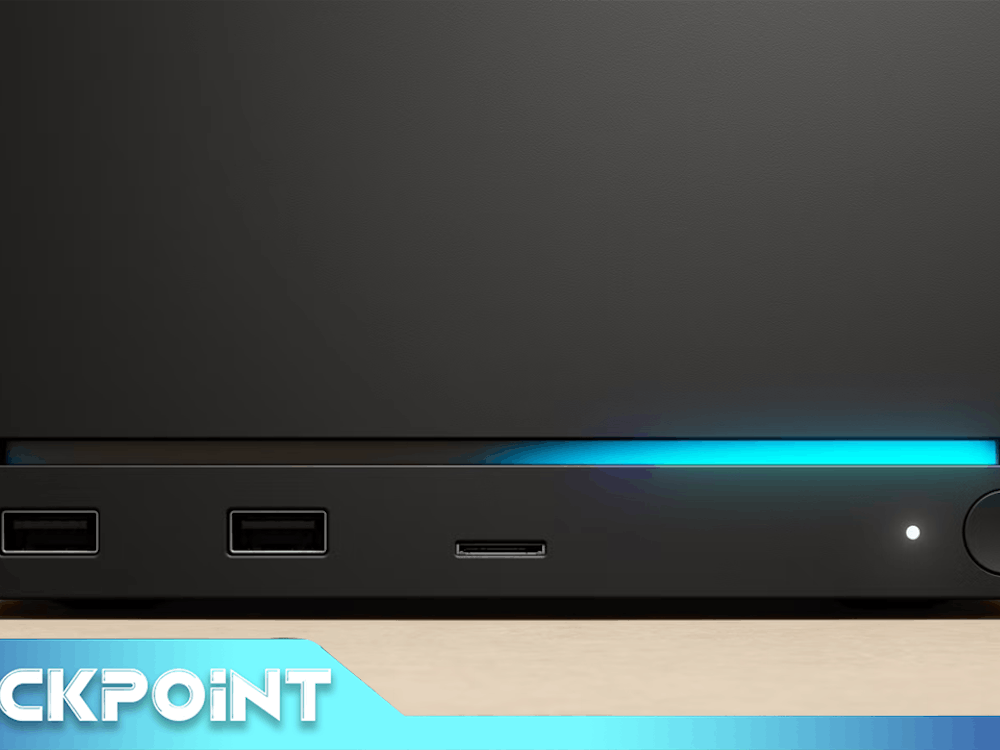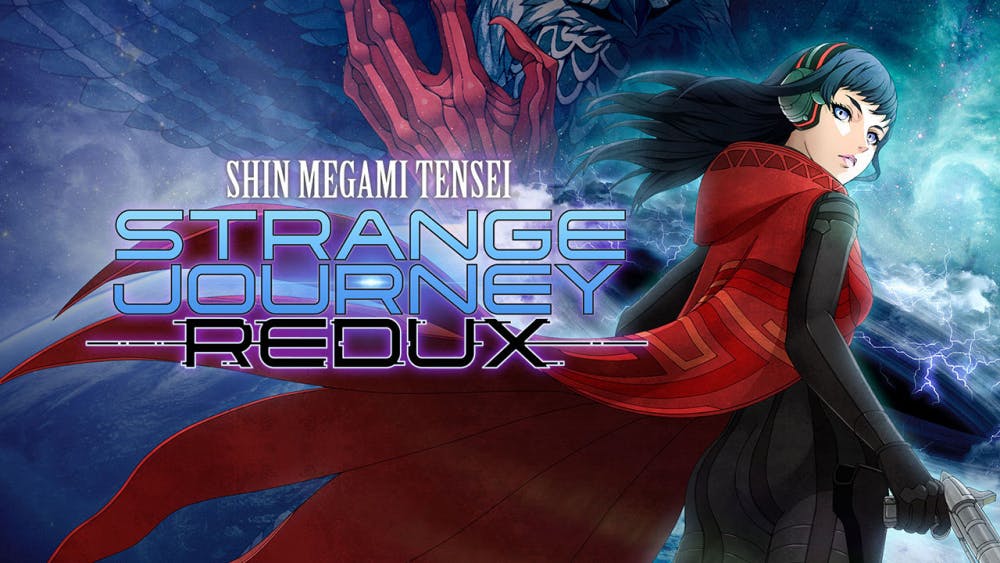When the game series Shin Megami Tensei comes up, it generally raises eyebrows and gets confused looks. Despite being one of the tentpole JRPG franchises, the series has only recently started to gain a more significant following in the West, which is almost entirely attributed to the Persona spin-off series. And while the Persona games are definitely great, the mainline Shin Megami Tensei games are a unique experience that is hard to find in other games within the genre. The games tackle more mature themes and philosophies up-close and personal, rather than through the veil of a high school anime. Although the mainline has become more diluted by excessive anime in recent installments, they haven’t gone full Fire Emblem waifu simulator. Yet.
So when it was announced that Atlus would be re-releasing one of the mainline titles, Strange Journey, onto a more modern console, I was pretty excited. The original is a very good game that could only be improved when stepping away from the limited Nintendo DS hardware. Unfortunately, Altus did what Atlus does best: re-use as many assets as possible. At the very least, they didn’t ruin an incredible title through their laziness this time.
Humanity’s last hope
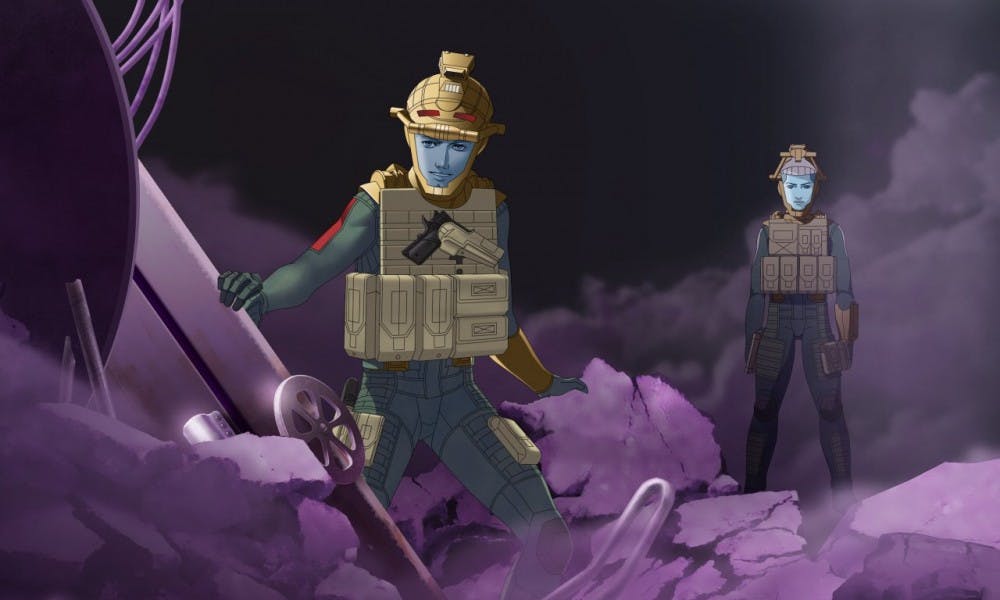
Image from Destructoid
Strange Journey is the story of a multinational military group who are sent to investigate a strange phenomenon: the Schwarzwelt. The Schwarzwelt is a large cloud that absorbs and destroys anything it comes into contact with, and grows with each passing day. Four ships, decked out in anti-Schwarzwelt technology are sent in to investigate. However, something goes horribly wrong, and the last operational ship, the Red Sprite, must attempt to escape their alternate dimensional prison.
Throughout their exploration, demons and angels modeled after mythological beings will not only challenge the crew to battles of might, but also battles of mind and philosophy. Will the player choose to align themselves with the angels, the demons, or neither? The game throws a lot of heavy questions at the player, and ones that could be given plenty of thought. Thanks to the different paths in the game, the player can answer these questions honestly and get a decent role-playing experience from their role-playing game.
The characters in the game, though many take a backseat to the core cast, are also surprisingly interesting. Thanks to the new character portraits added in Strange Journey Redux, they are given a little more characterization and are somewhat easier to connect with, though many aren’t fleshed out beyond a couple of minor character traits. The core cast, however, is likeable and creates some actual internal struggle for the player. There are times where, say, the player might personally agree with the rude but driven Jiminez, then decide for the sake of the mission to side with the skeptical but kind Zelenin. It’s hard to really discuss the game’s story without breaking into spoiler territory, but let it be known there’s a lot to take in. It has its low points and its slow points, of course, but the story serves its purpose incredibly well and serves as a great foundation for rest of the game.
Oppressive atmosphere weakened by uninvited anime
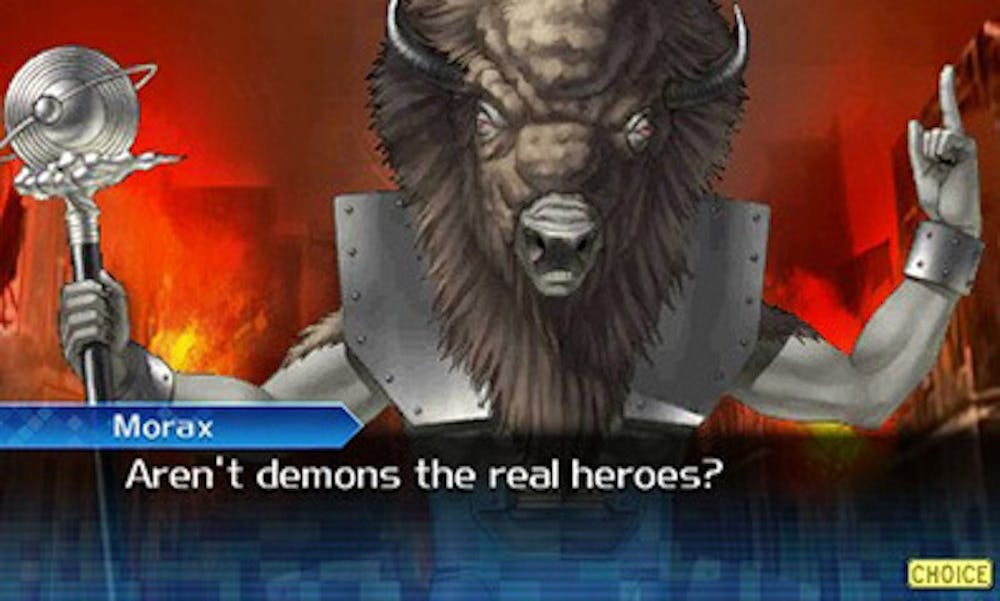
Image from Gadgets360
Strange Journey’s most defining feature is probably its complete control over the oppressive atmosphere. The Schwarzwelt is, at least, almost quite literally Hell on Earth, with each new sector the Red Sprite travels to providing a new dismal landscape, reflective of humanity’s own imperfections. The art design plays a huge role in this, with each sector crafted to not only provide some new locales for the player to move through, but also progress the underlying narrative. The design of the demons also ranges from intimidating to somewhat silly, although almost all of them are simply re-used from previous Shin Megami Tensei games. The only negative here comes from the fact that the port doesn’t look that much better than the DS original, which is a shame, since 3DS games are capable of looking much better than this.
The soundtrack also plays a significant role in creating atmosphere for the game. The game primarily uses a bombastic orchestral soundtrack, with heavy brass and percussion. Those tracks help drive the player to pull themselves out of the idea that the mission is completely doomed, giving hope that success is still possible. The music for the different sectors contains a number of different styles. For example, Sector Antila has a very slow and intense backing track, while Sector Bootes is more lively and kind of jazzy, with plenty of saucy brass stings. The improvements made to the OST, thanks to the improved sound card of the Nintendo 3DS, make the experience that much greater, especially considering the OST is my personal favorite part of the game.
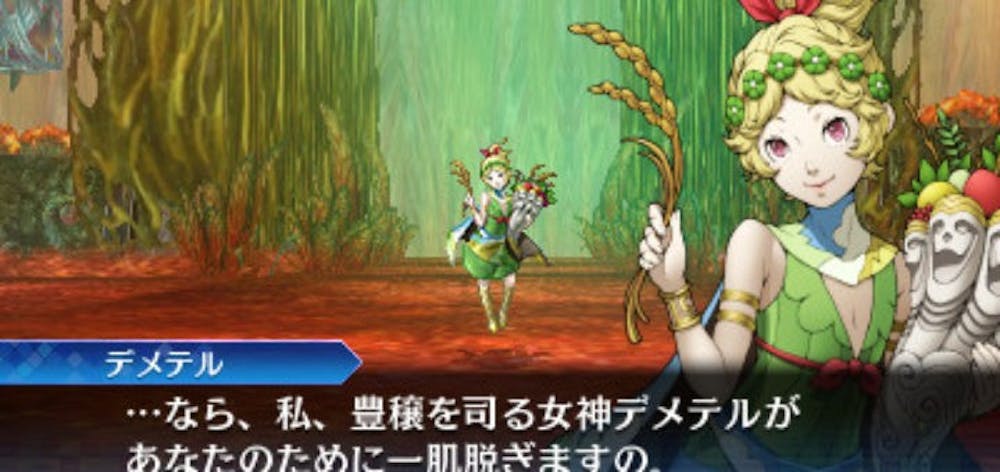
Image from PersonaCentral
Yet, this all applies to the original Strange Journey. The port does very little to change presentation, aside from adding character portraits for the crew of the Red Sprite and adding a couple new character that are disgustingly anime. The best part about the original Strange Journey for me is that all the characters are more realistically styled, making the demon world of the Schwarzwelt that much more alien. In the remake, many of the new portraits for female crew members make them look incredibly young, with Chen looking like a Girl Scout when compared to her partner Irving. When the game first throws the player into the new content the remake provides, complete with an anime-fairy-princess looking Demeter, my eyes rolled so far back into my head I could see my brain cells dissolving. It might not bother a lot of people, but in my opinion, the port didn’t really do much to make the game better. Despite that, the presentation as a whole is still pretty fantastic and the disgusting anime bits can be mostly ignored.
A solid combat system, but lacking in thrills
The gameplay of Strange Journey is probably the part of the game that, at least in the original, acted as the biggest roadblock for someone just getting into the series. Strange Journey returns to the first-person dungeon-crawler roots of the series, with the player tasked to explore the Schwarzwelt, which turns out to be a gridlocked series of corridors that are maze-like in their structure. The player will deal with puzzles, trap tiles, and irritating water slides that only sometimes send you back to the start of the dungeon. The dungeon-crawling is perfectly fine, but doesn’t really add much to the game aside from atmosphere. When compared to the more fleshed out dungeon crawling in something like the Etrian Odyssey games – with a map that the player can draw on and take physical notes – Strange Journey’s map isn’t as interesting. Even though the dungeon crawling doesn’t do much for me, it’s still exciting to traverse the different locales as you try to escape the Schwarzwelt.
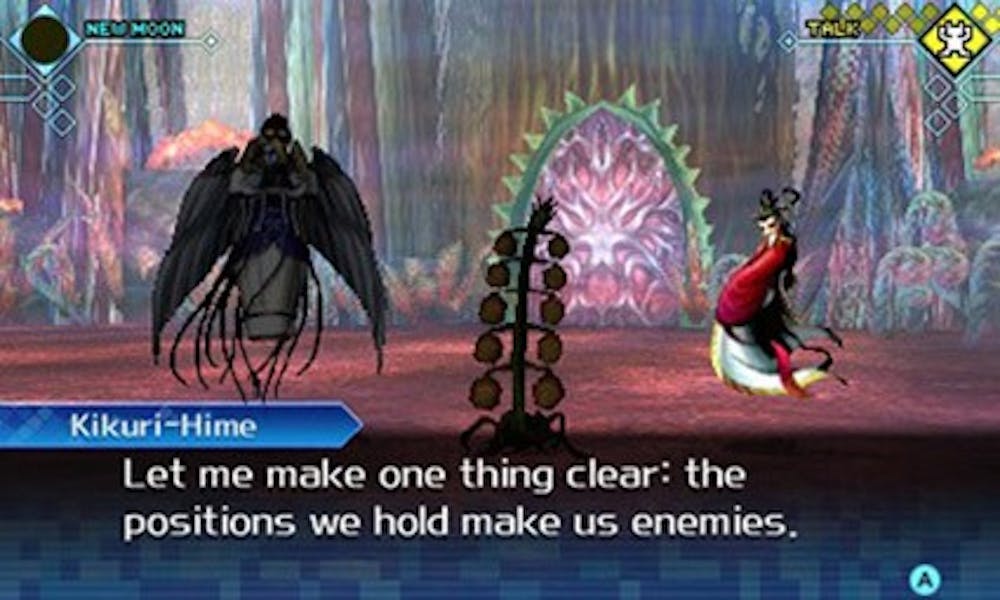
Image from TechGaming
Actual combat in Strange Journey does not have the “press-turn” system of other mainline Shin Megami Tensei titles, or even the “once more” system of Persona 3 and onward. Instead, Strange Journey uses a combat system similar to older Shin Megami Tensei games, with some added fun. The player and all the demons are assigned an alignment: law, neutral, or chaos. If the player hits a weakness of the enemy, every demon that shares the alignment of the attacker will perform a “Demon Co-op” attack, dealing additional damage to the enemy. It’s relatively simple, and more strategic than the average JRPG, but is nowhere near as strategically engaging as the press-turn system. The game is still fun and provides a lot of options to dismantle foes. The difficulty curve is also a little gentler than other Shin Megami Tensei titles, which is only a bad thing for masochists like I. The combat is still fun and engaging in its own right. The major boss fights become pretty intense at times as well, but it’s not a surprise that the game is sometimes referred to as “Sleep Journey.”
The additions made by the port only really serve to make the game easier. A number of “sub-apps” were added that remove some of the features of the game that some might call “unfair.” The ability to field save is very convenient, although it does remove some of the thrill of losing hours of progress to an ambush from a powerful enemy. There’s also a whole new dungeon to explore, adding some additional gameplay for those who played the original. Yet, there’s not a whole lot else that would really draw people who played the original to buy the remake, unless that extra bit of dungeon content is worth the cost.
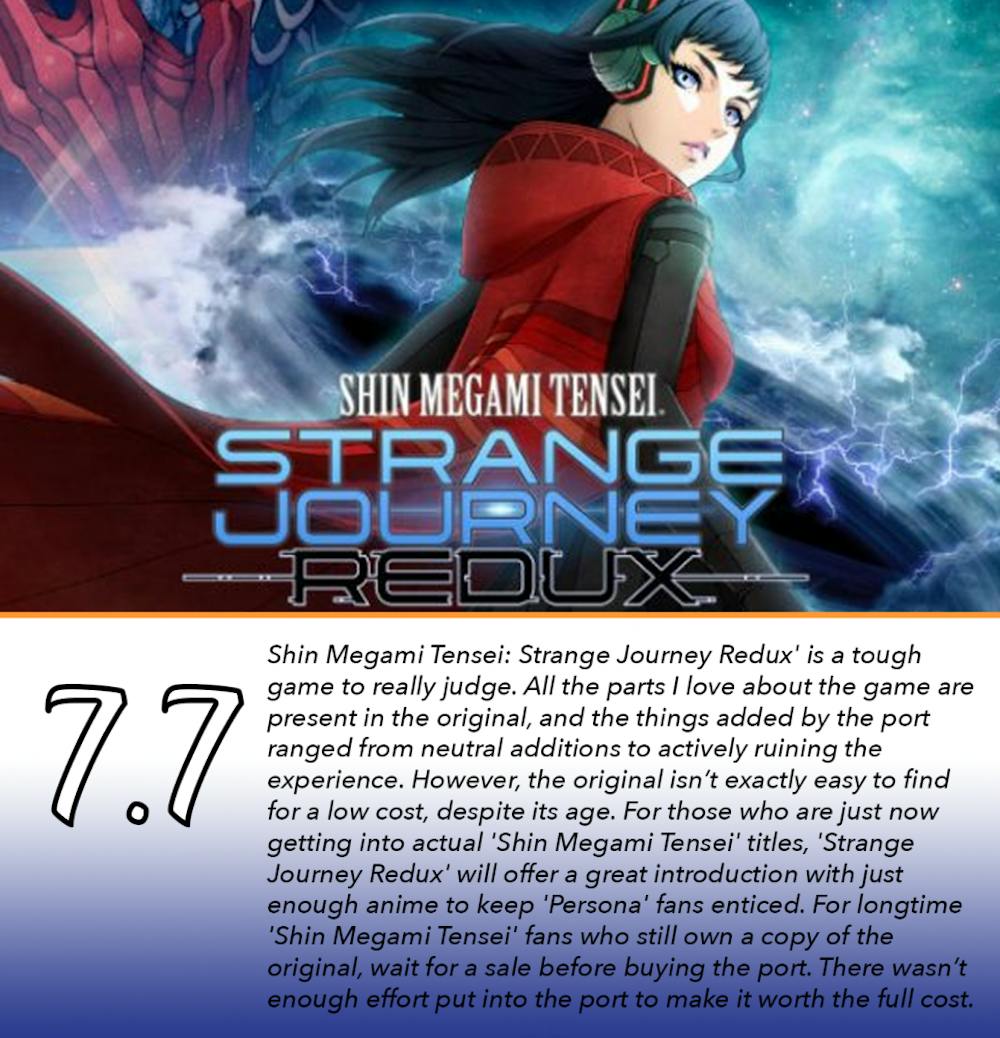
Featured Image from NintendoBlast
For more entertainment related content, visit us at Bytebsu!










